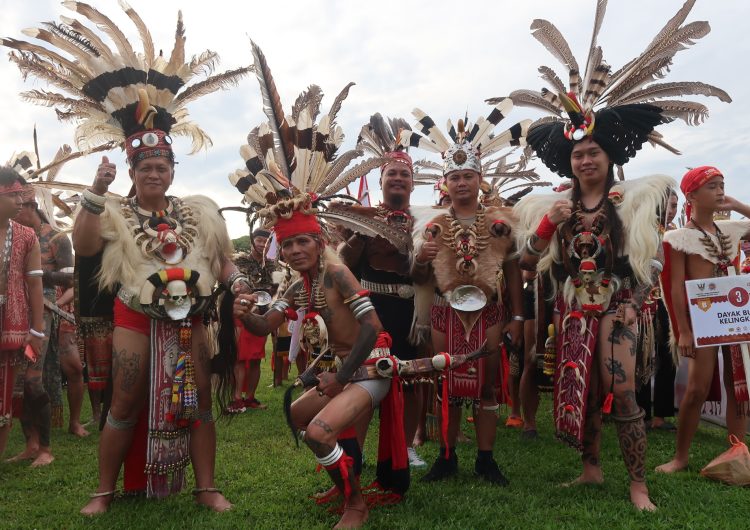Under cloudless skies and amidst the lush green backdrop of Borneo’s rainforests, the heartbeat of Dayak culture echoed through the streets of Betong as thousands gathered to celebrate Gawai Dayak, a thanksgiving festival marking the end of the rice harvest.
A feast for both the eyes and ears, The Bruneian had the chance to witness the spectacular traditional Gawai Parade (Niti Daun) and participate in the Ngabang Gawai celebration in Betong, Sarawak, as part of a Media Familiarisation Trip organised by the Sarawak Tourism Board.
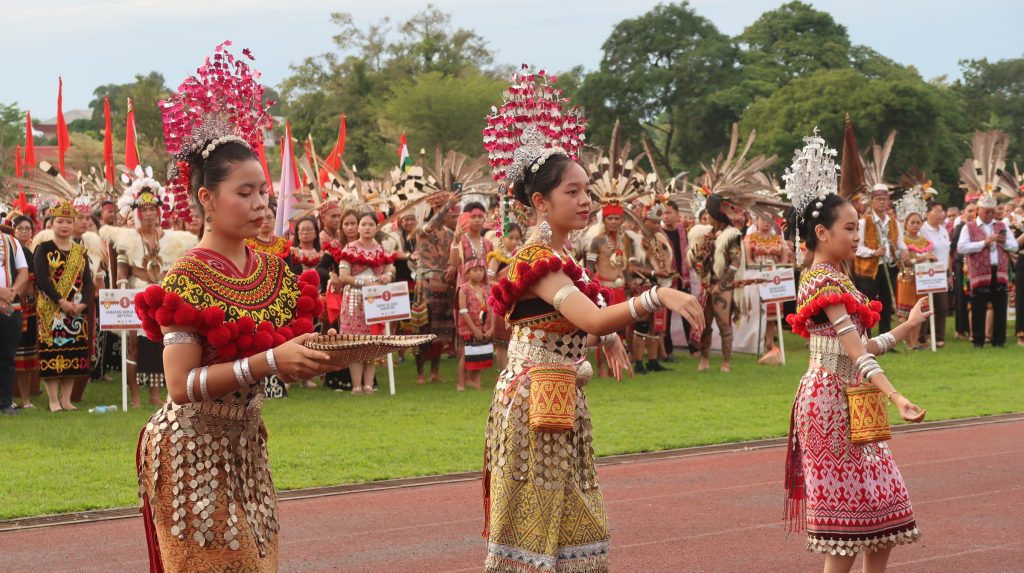
The festival is a powerful symbol of unity, cultural resilience, and hope for the Dayak community. More than just a harvest celebration, it is a vibrant occasion where heritage takes centre stage and traditions come alive.
Uniting all the cultures and traditions of the Dayak people in one, this year’s celebration was nothing short of unforgettable.
Niti Daun Parade: A colourful display of Dayak pride and heritage
The heart of Betong Township came alive with culture and celebration during the two-hour Gawai Dayak parade, a spectacular showcase of Borneo’s rich traditions and community spirit.
Over 1,500 participants from 18 different contingents filled the streets, each proudly donning colourful traditional attire that tells the story of powerful Dayak heritage and identity.
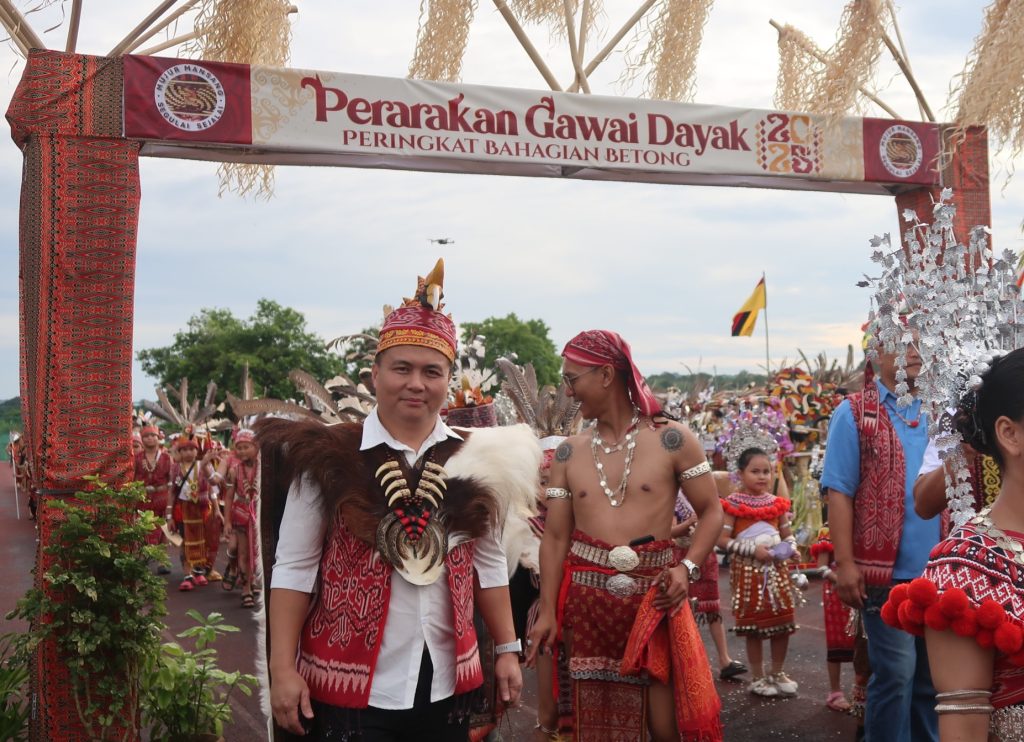
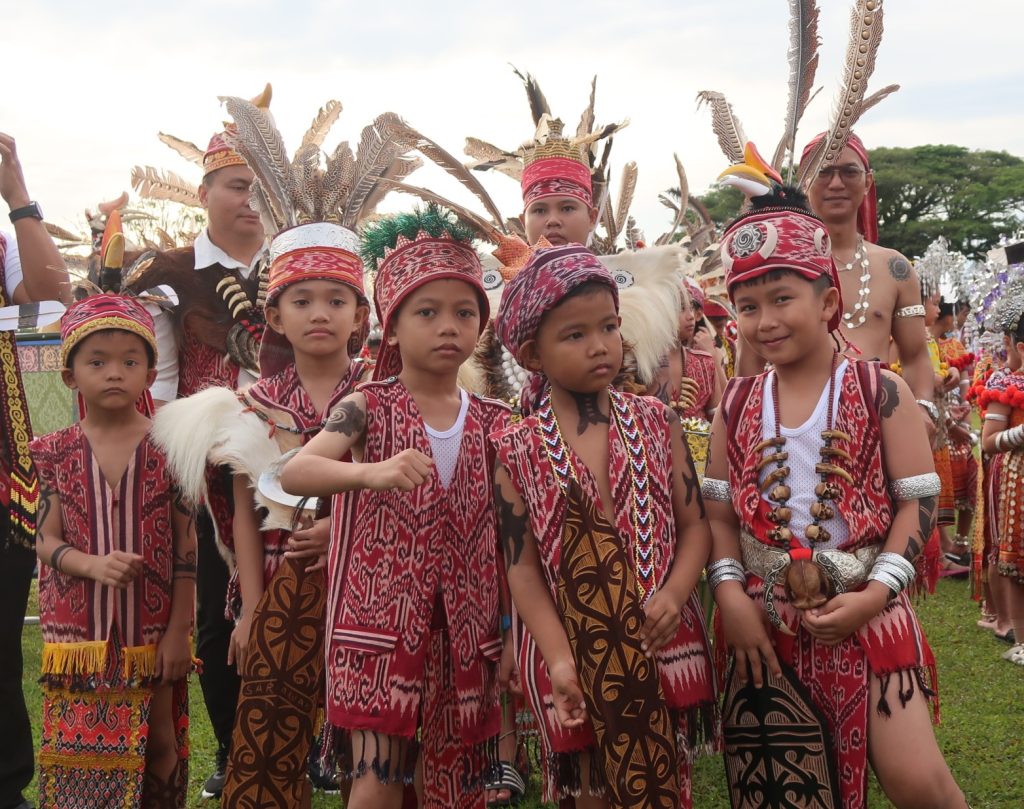
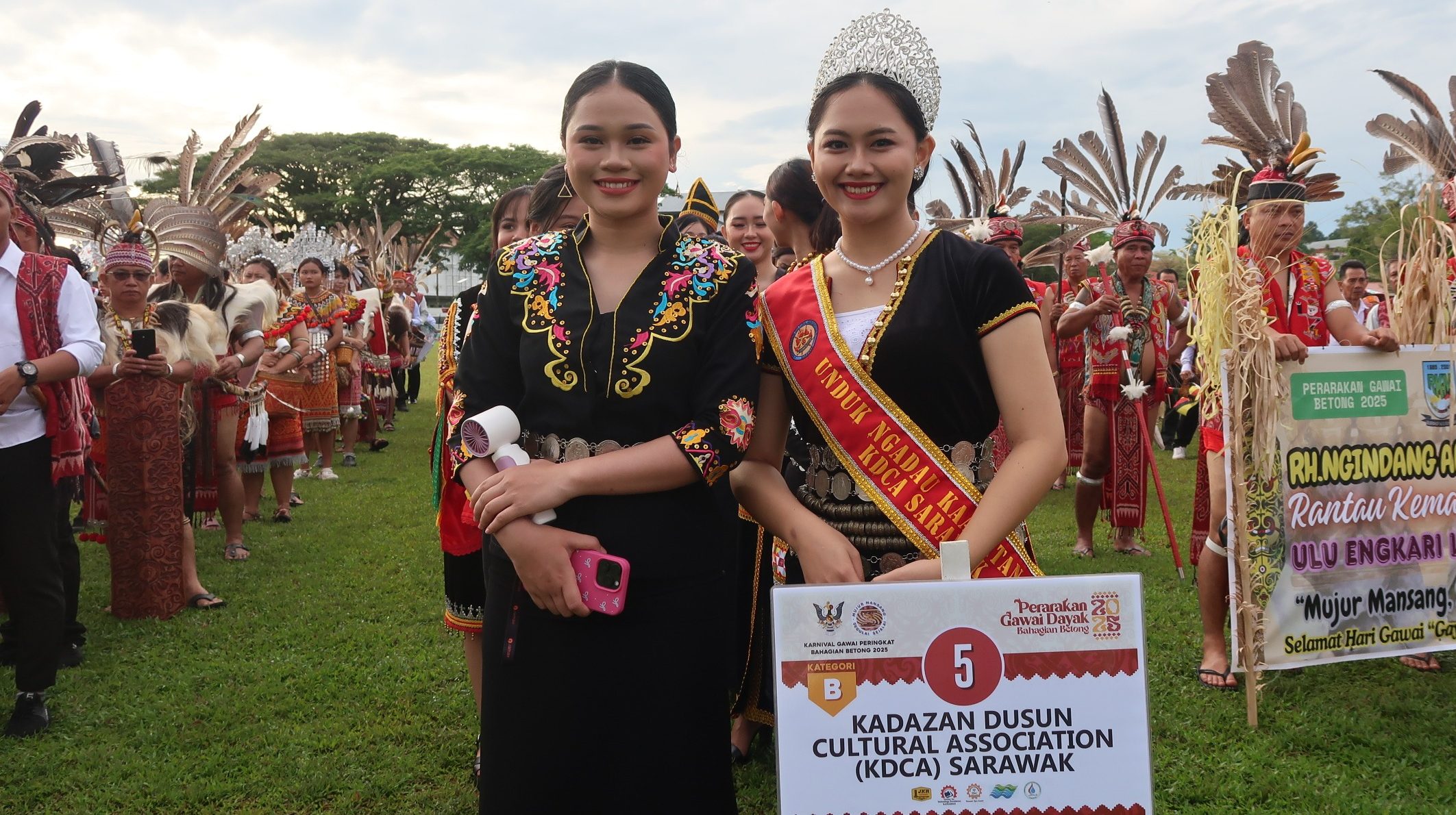
From government bodies to schools, every group brought their own unique energy and pride, transforming the 1.8-kilometre parade route into a moving canvas of culture, unity, and joy.
Local Iban men marched with fierce pride, wielding their iconic parang ilang, warrior machetes that symbolise bravery and strength. The women captivated the crowd in the exquisitely detailed Ngepan Indu Iban, a ceremonial attire symbolising identity, nature, and ancestral pride.
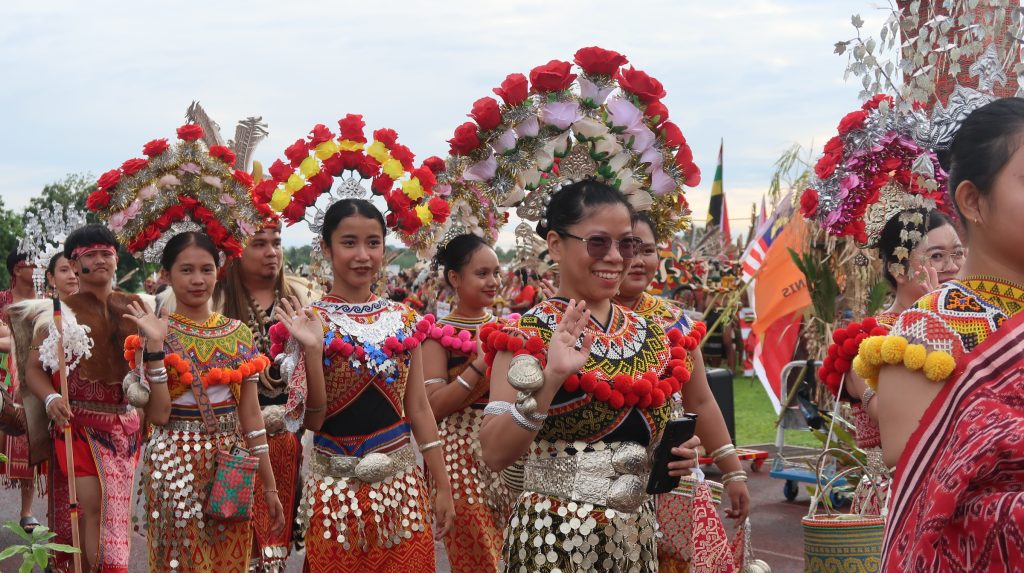
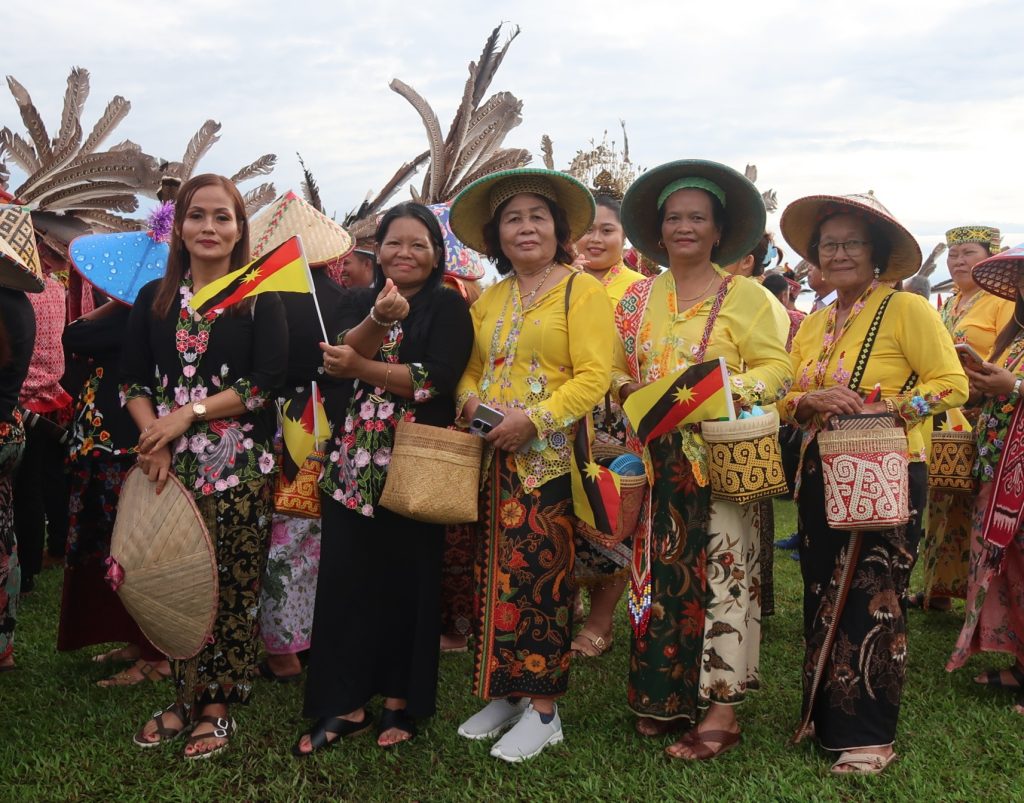
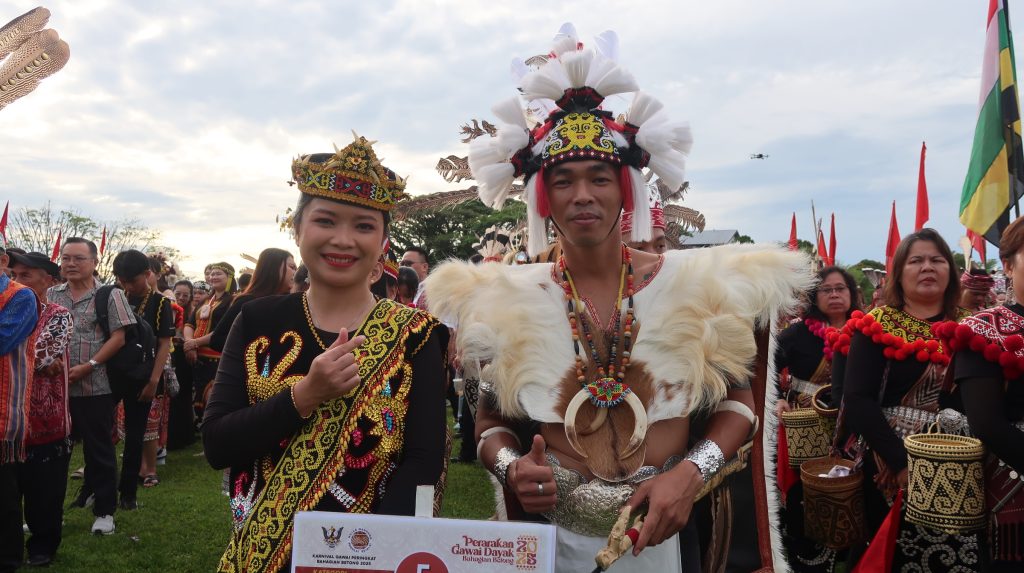
Every element of the costume speaks of heritage: the Kain Kebat, a woven skirt adorned with traditional Iban motifs inspired by nature’s beauty; the Selampai sash, draped gracefully around the body; and the Marik Empang shoulder drapes that frame the wearer with elegance.
The women’s ensembles shone with layers of silver, including Tumpa Perak bangles that jingled softly with each step, the coin corset Rawai Tinggi, and the majestic Sugu Tinggi headpiece crowning the ensemble.
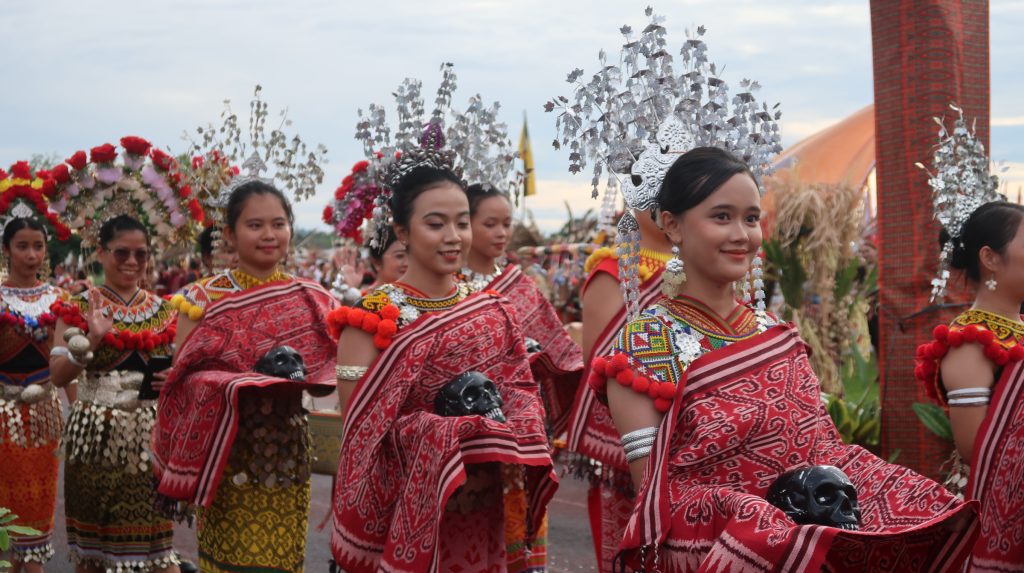
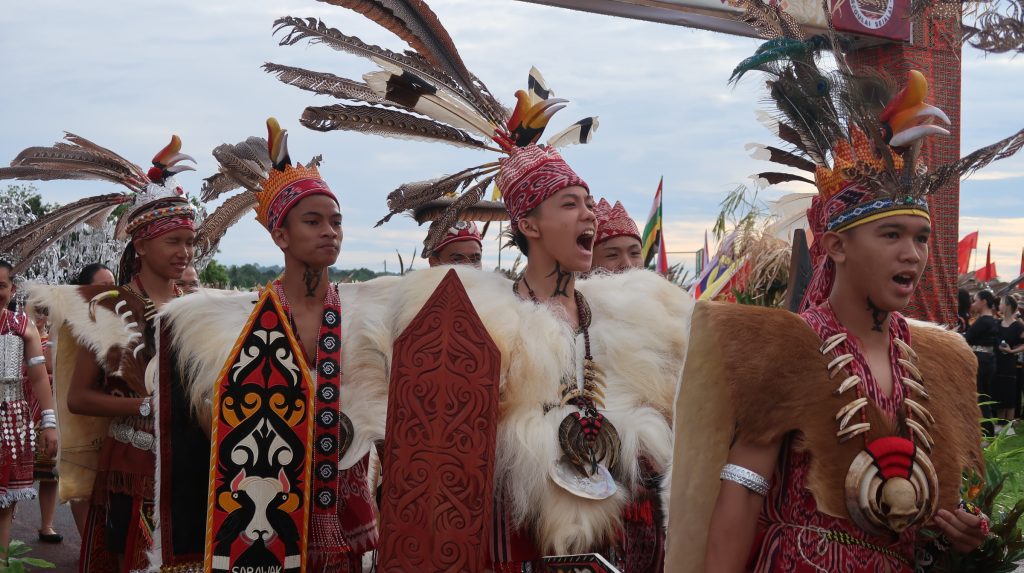
For the men, the Gagung, which was once crafted from tiger or bear skin but is now made from sustainable goatskin, represented strength and courage passed down through generations.
Paired with the Sirat loincloth and the Selapuk Tunjang headgear adorned with striking hornbill feathers, their attire paid homage to warrior ancestors and a deep connection to the land.
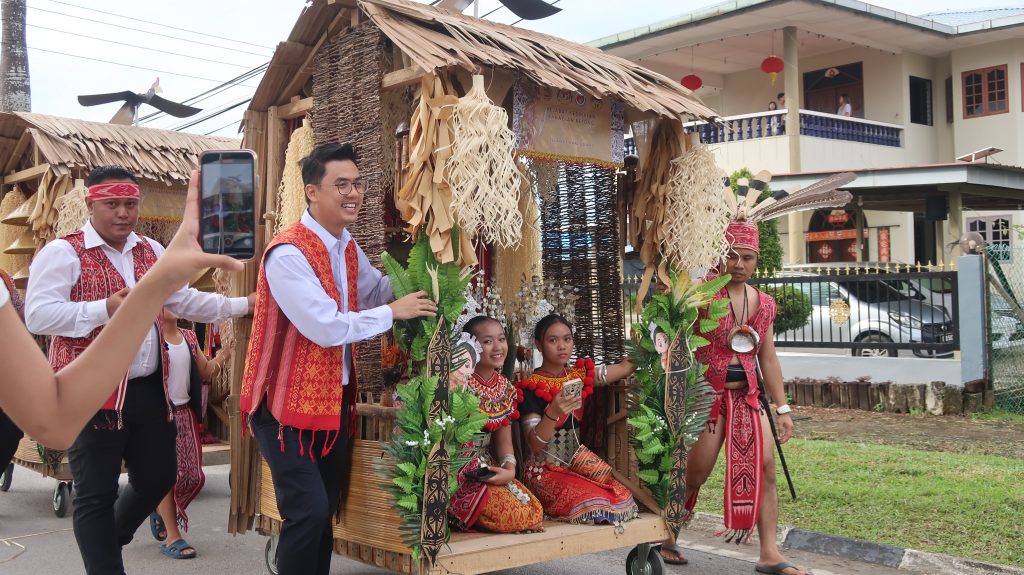
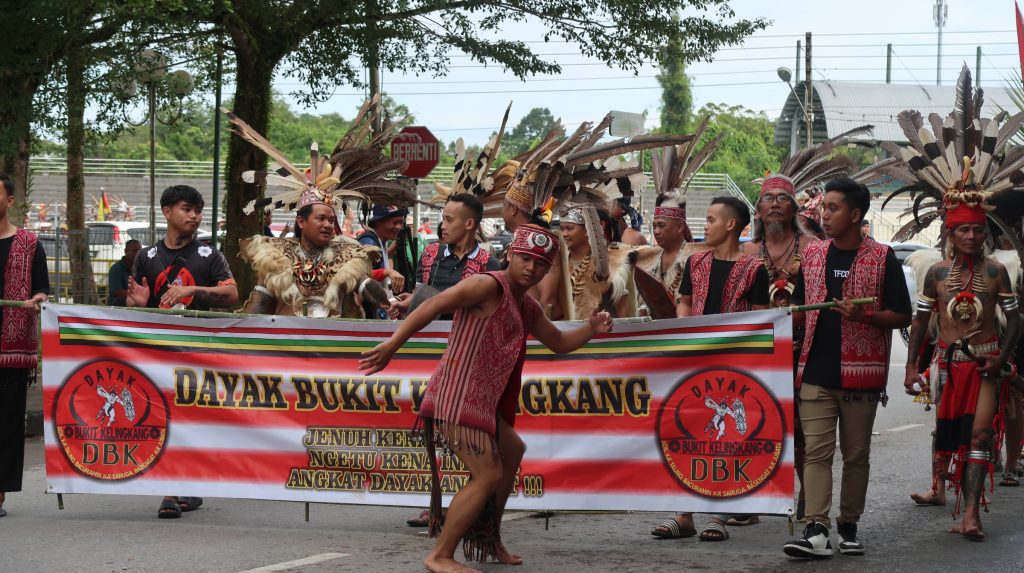
But the parade was more than a visual feast. The air thrummed with the hypnotic beat of traditional drums and gongs, guiding dancers whose movements told stories of ancient rituals and timeless legends.
Visitors from near and far joined in, immersing themselves in a vibrant celebration where heritage and community intertwine.
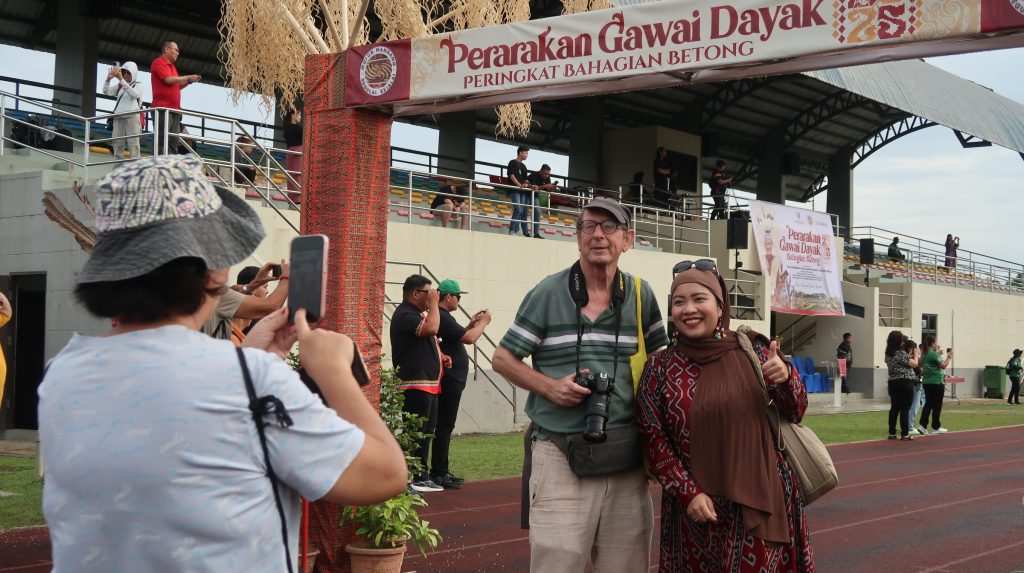
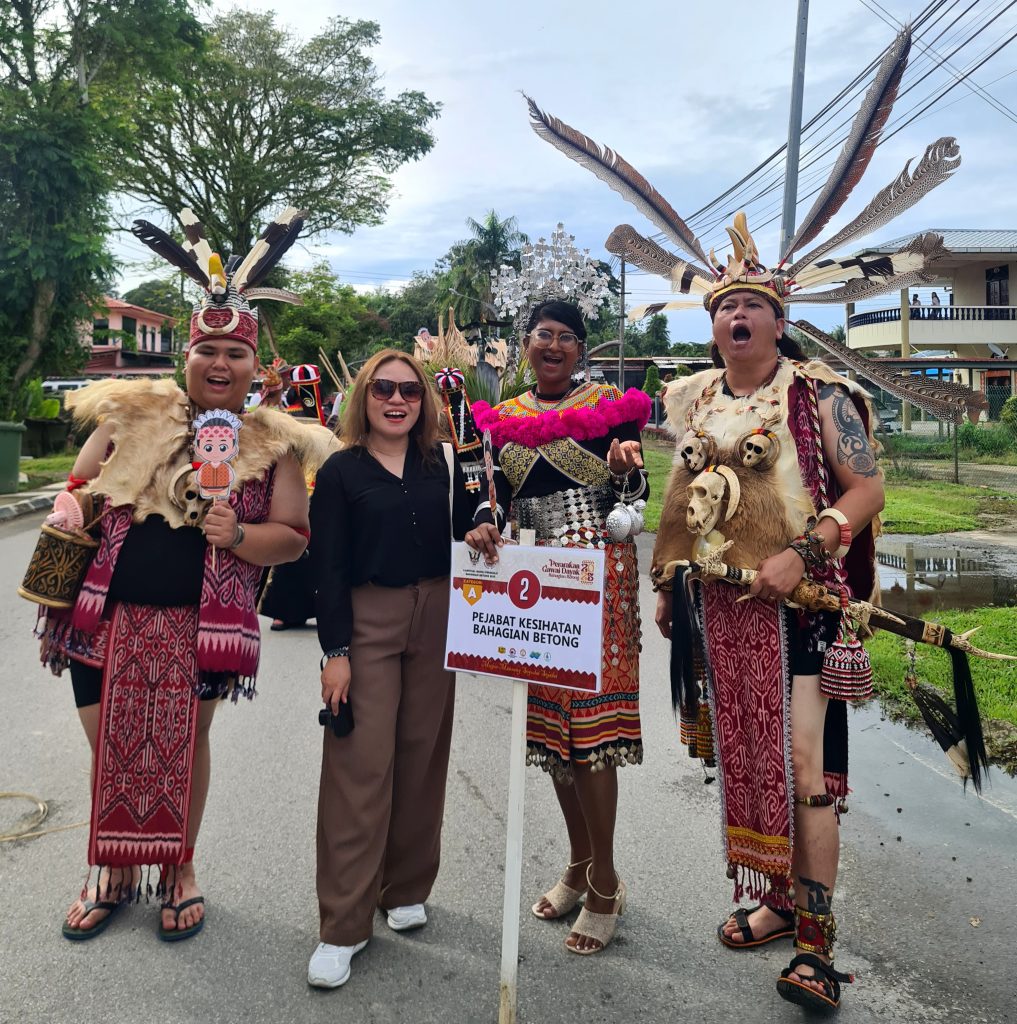
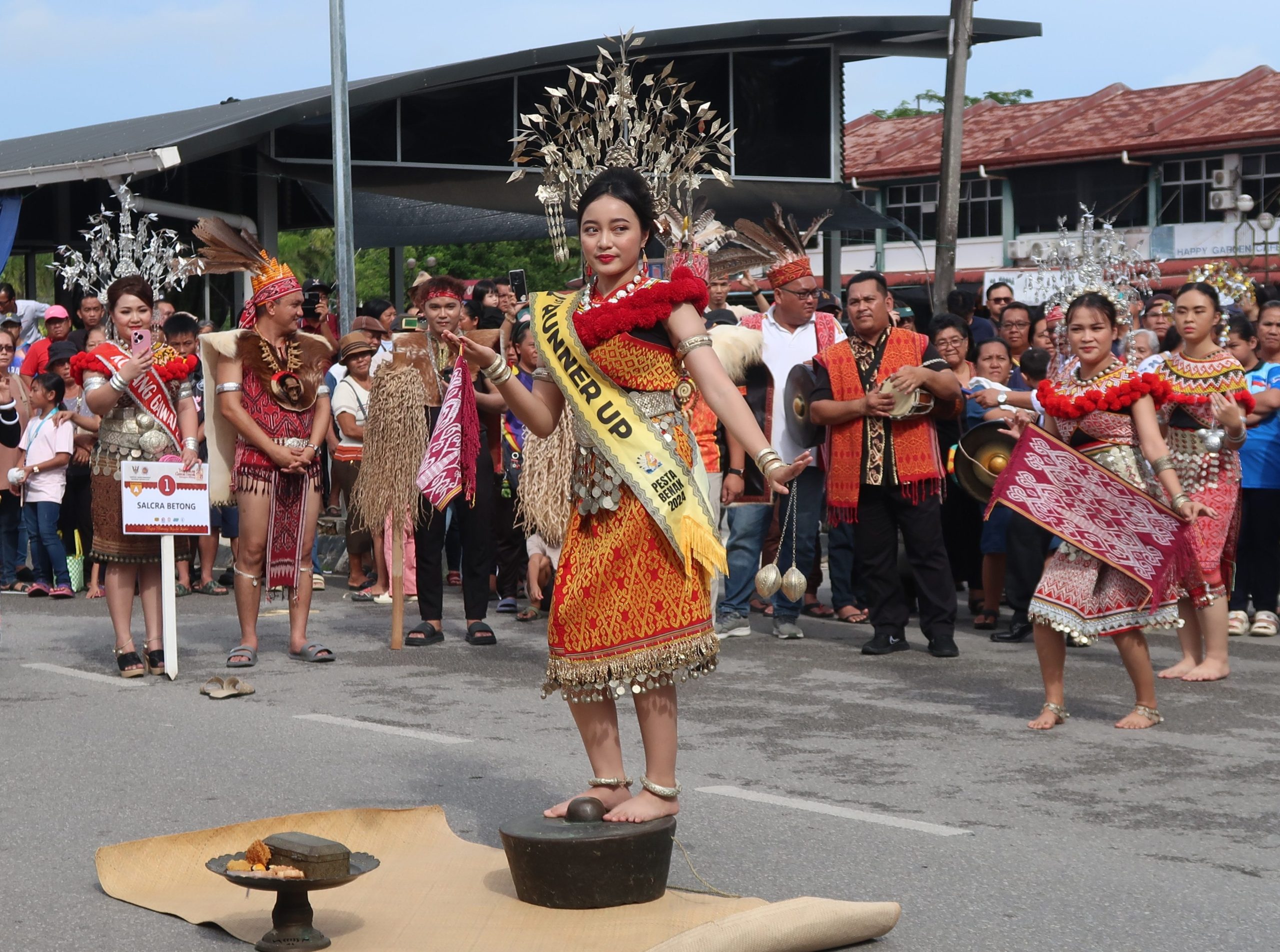
For one participant, taking part in the parade was a deeply personal journey. “Each piece of my costume carries the stories told by the women in my family,” she shared, her voice filled with pride. “It’s a way to keep our traditions alive and honour those who came before us.”
Ngabang Gawai: A celebration of unity and tradition
Guests from all races and religions gathered in Betong for the STF Gawai Dayak Open House 2025, a vibrant celebration of Sarawak’s cultural unity and a heartfelt showcase of Dayak heritage.
Hosted in collaboration with the Betong Resident Office and supported by the Ministry of Tourism, Creative Industry and Performing Arts Sarawak and the Ministry of Youth, Sports and Entrepreneur Development Sarawak, the event returned for its third year, shining a spotlight on rural tourism and cultural preservation.
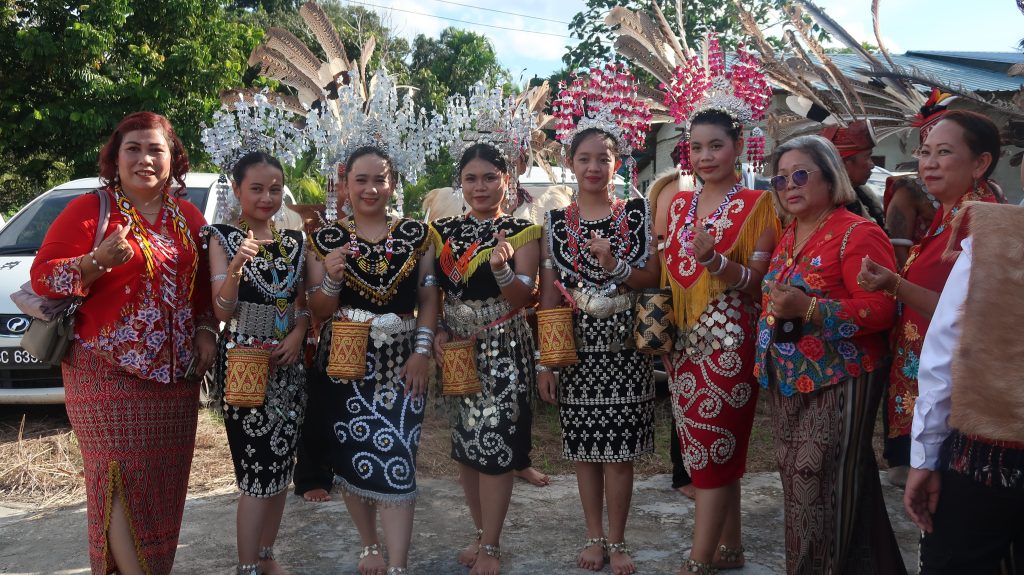
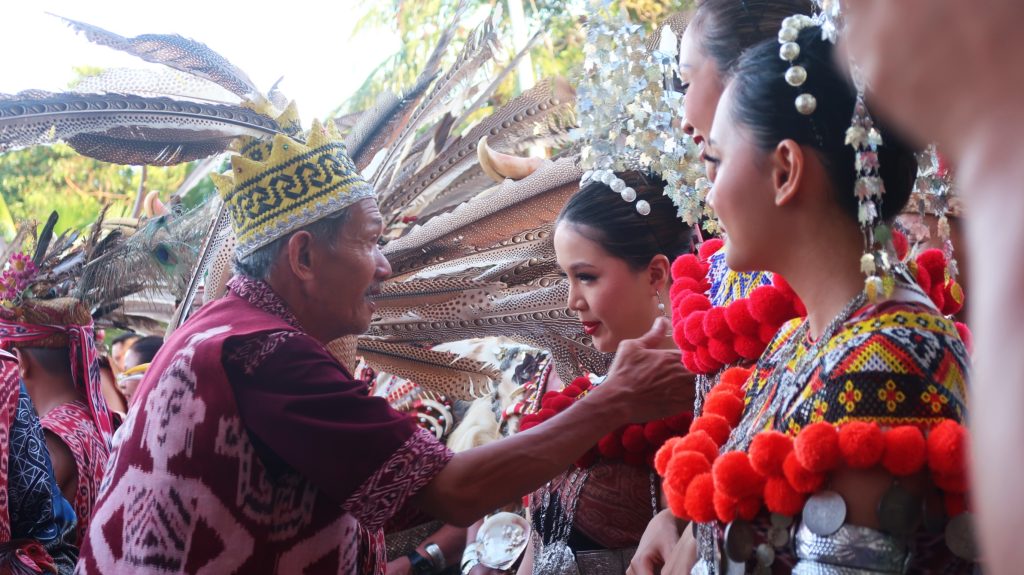
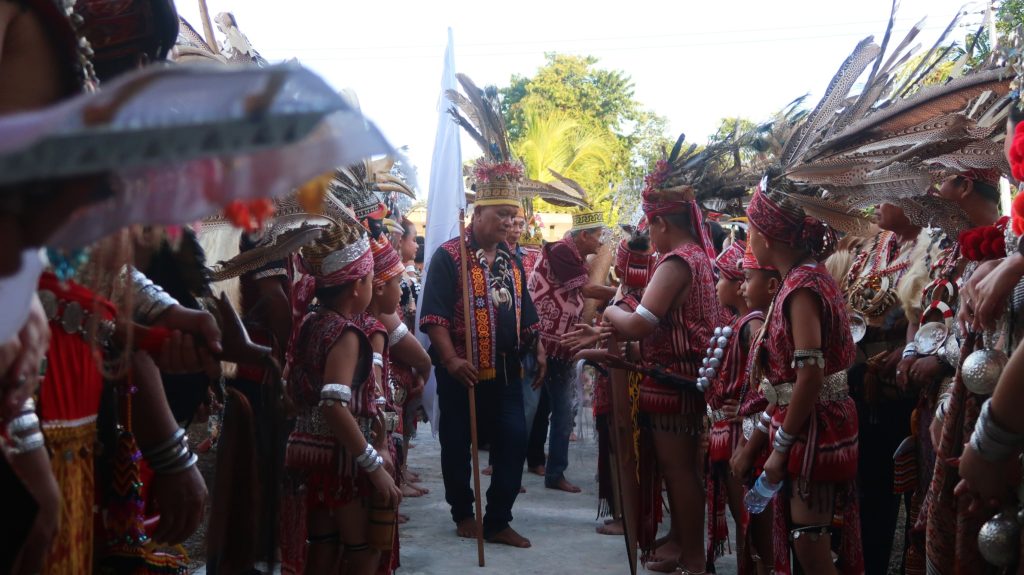
As part of our stay, The Bruneian arrived at the contemporary 29-door Engkeranji Longhouse, which served as both venue and homestay.
We were welcomed with open arms and invited to witness the miring ceremony, led by nine Tuai Rumah (longhouse chiefs). The age-old ritual, featuring offerings of food, tuak (rice wine), and a symbolic rooster sacrifice, was both powerful and deeply moving.
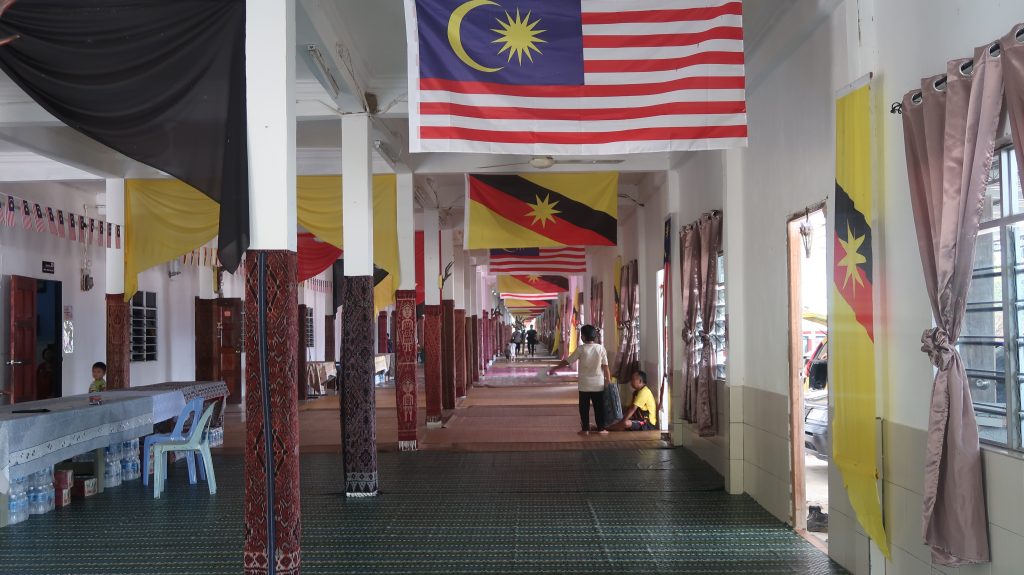
The rooster’s blood was gently applied to the Tiang Pengingat, a ceremonial post adorned with motifs and inscriptions that link present generations to the very first Gawai.
As gongs rang out and pantun were recited with poetic cadence, we could feel the spiritual depth of the ceremony. The entire ritual, which lasted until sunset, was not just a performance but a genuine expression of identity, gratitude, and unity.
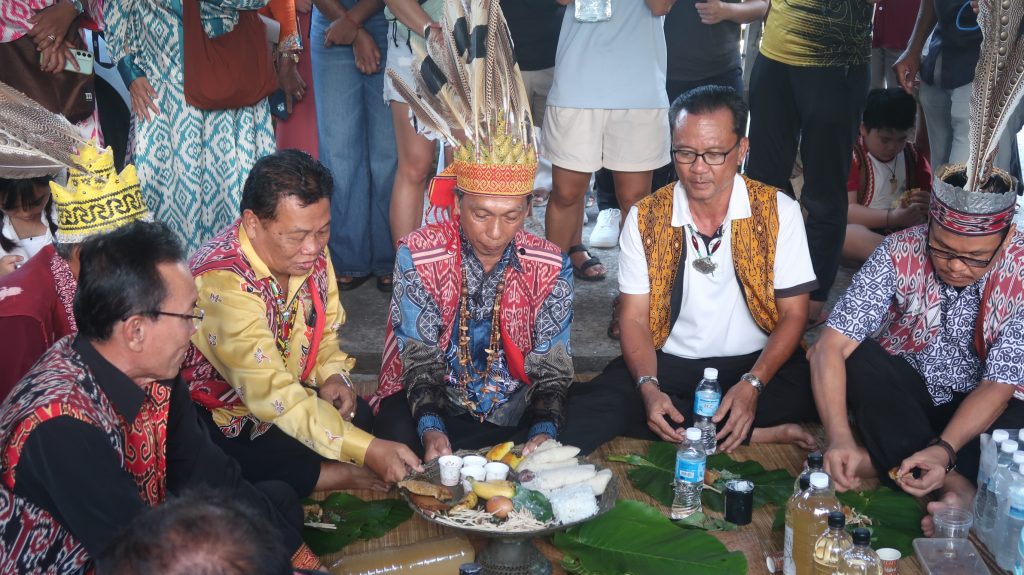
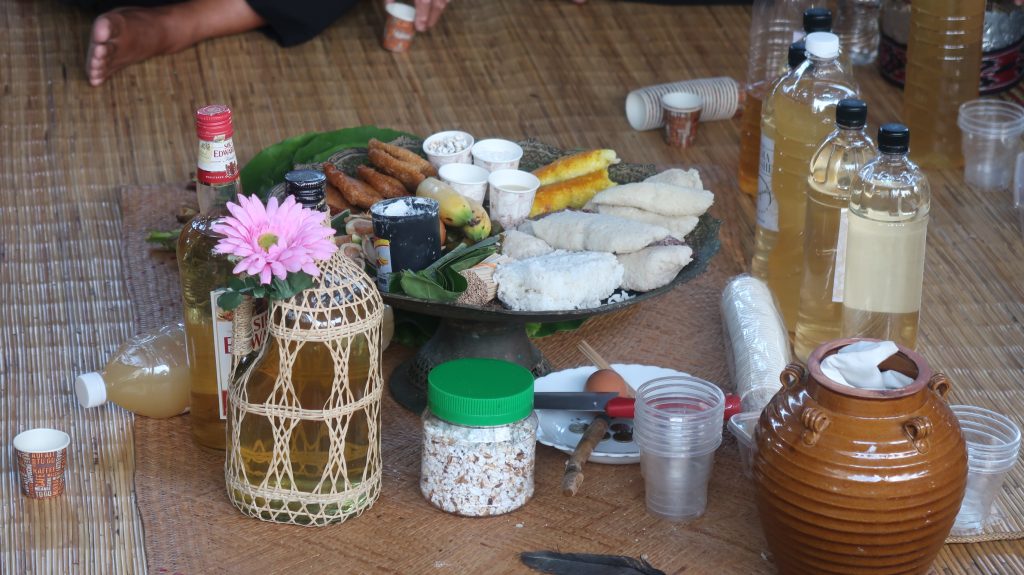
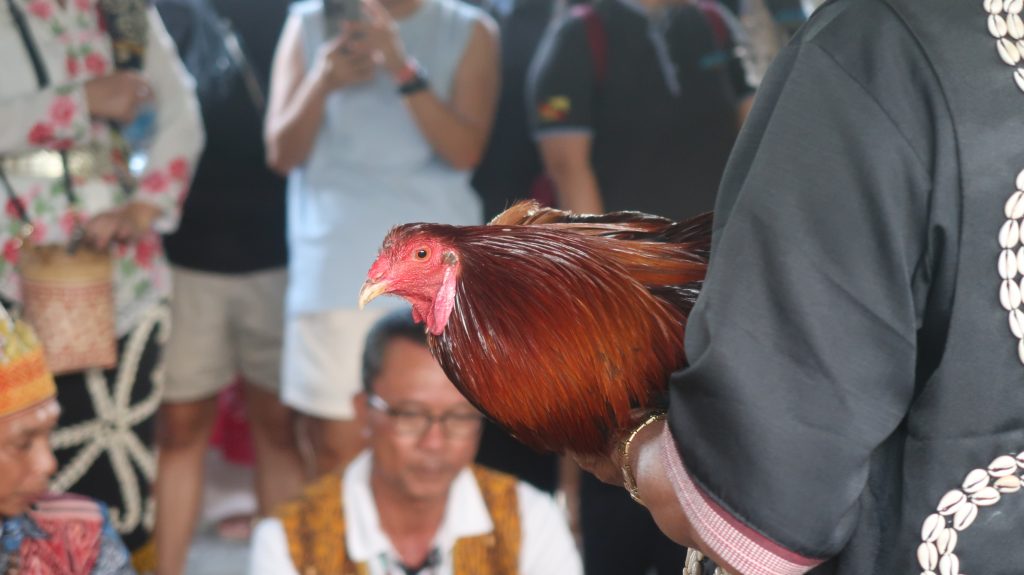
The hospitality was exceptional. We even sampled delicious Iban dishes like chicken pansuh and pulut, and were offered halal options and non-alcoholic beverages, thoughtfully provided to ensure everyone felt included.
Further into the night, the celebrations wrapped up in the much-anticipated Gawai-Kaamatan Concert, held behind the longhouse under a beautiful starlit sky.
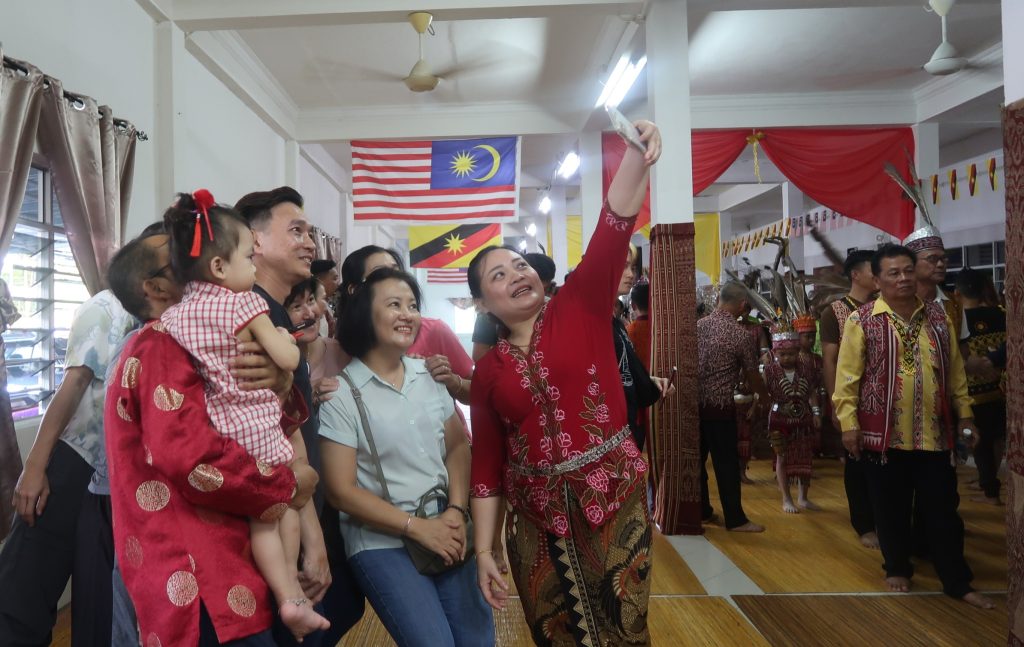
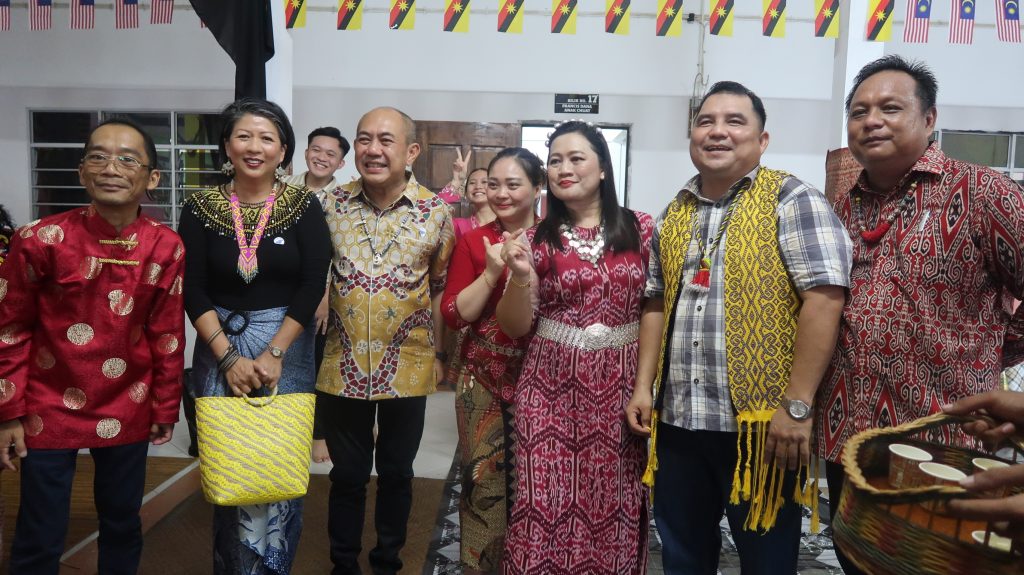
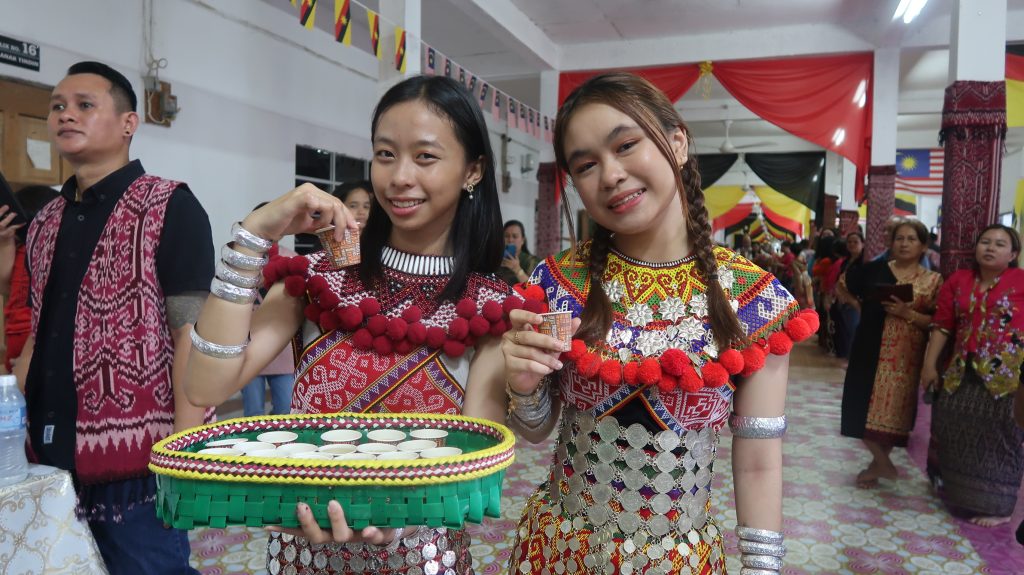
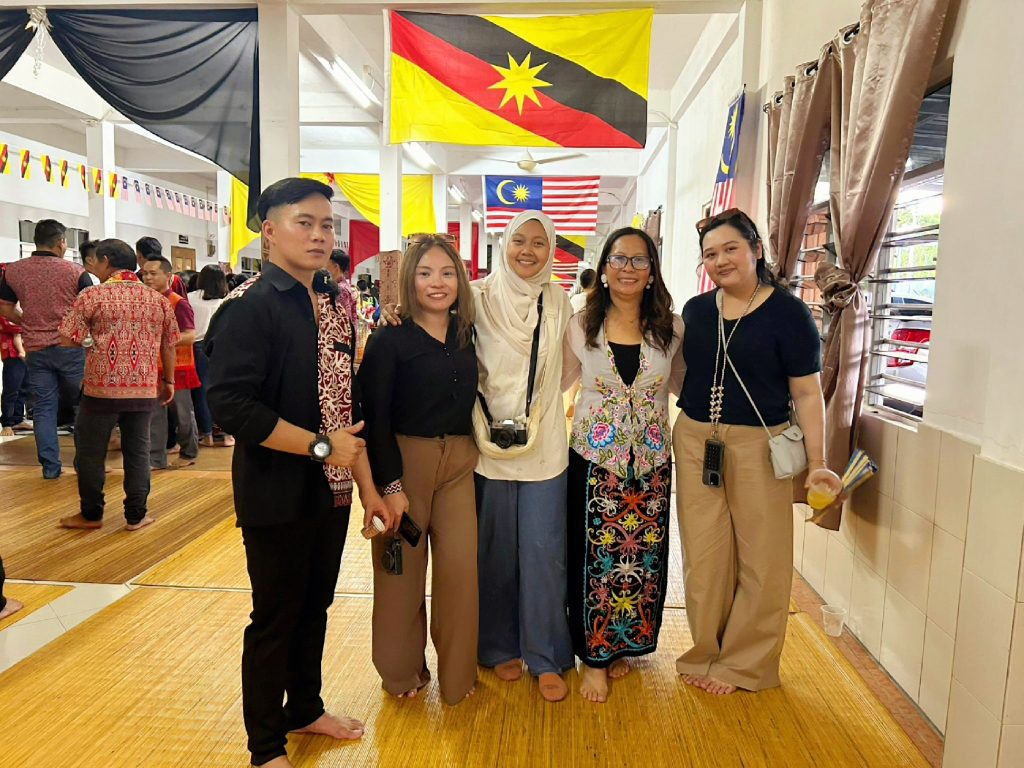
The special event brought together cultural performances from both Sarawak and Sabah, celebrating the rich heritage of the Dayak and Kadazan-Dusun communities.
The concert was a beautiful display of unity and traditions, showcasing the vibrant diversity of Borneo’s indigenous cultures through its music, dance, and storytelling.
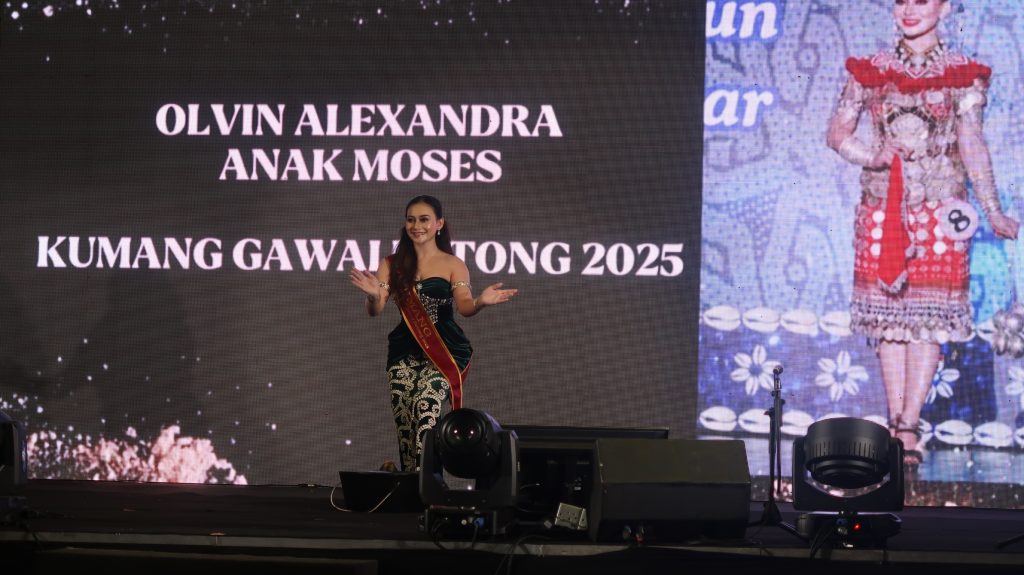
This year’s celebration also introduced glamping options, allowing guests to experience the festival with a touch of comfort and the warmth of Dayak hospitality.
Headlined by renowned local artists including Melissa Francis and Jerry Kamit, the concert kept spirits high as visitors and locals alike danced and sang along.
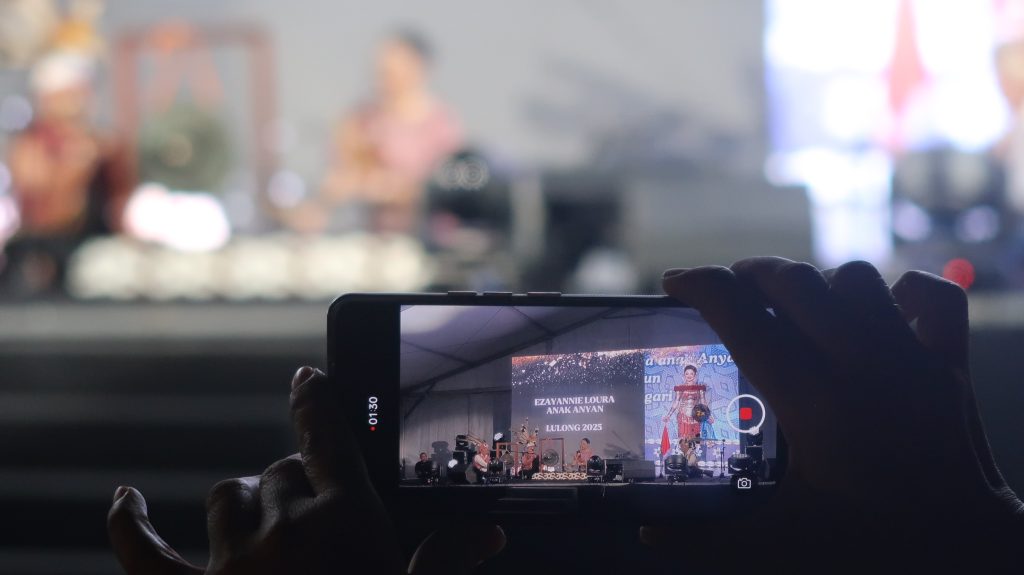
The night sky then lit up with a dazzling fireworks display, marking a joyful end to an unforgettable celebration.
The Gawai Open House was not just an event. It was a moving tribute to heritage, a celebration of unity, and a living reminder of the rich cultural identity that continues to thrive in Sarawak’s heartlands.
Exploring Betong’s rich heritage and history
Beyond the Gawai celebration, we also had the opportunity to explore Betong, a town steeped in Sarawak’s rich historical and cultural heritage, renowned for its pivotal role in the resistance against the Brooke administration.
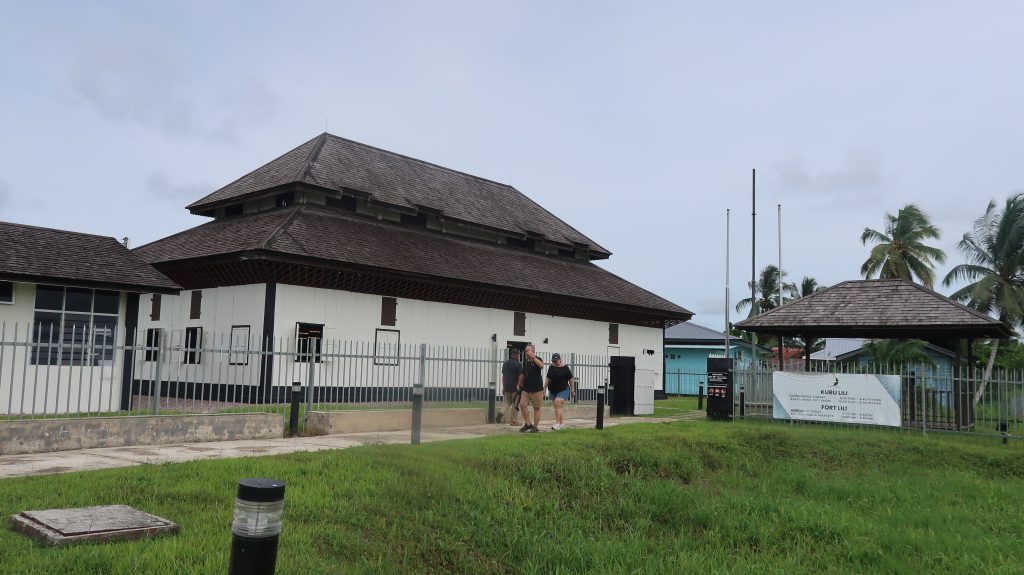
A highlight of our trip was Fort Lily, a historic site that offers a fascinating glimpse into the fortress’s role during the Brooke era and its importance in defending against the Iban from Sadok.
Built in 1858, the fort now serves as a museum showcasing the history and culture of the Betong community. Walking through its remains, visitors can almost feel the echoes of bravery, strategy, and sacrifice that shaped the region’s past. It is truly a must-see for history enthusiasts.
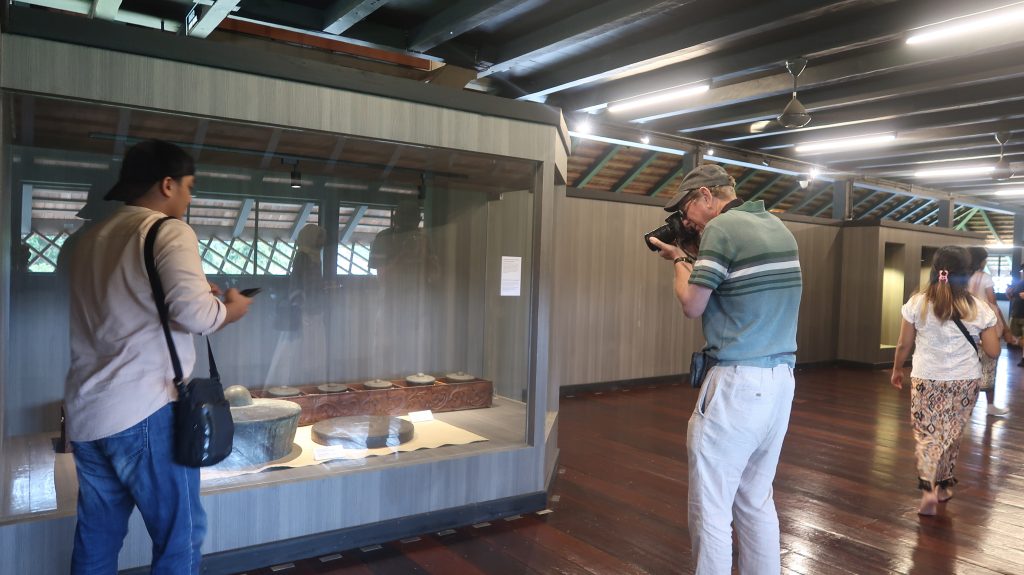
Our tour guide, Frankie Kho shared that before its renovation, the roof was originally made of Nipah leaves, which have since been replaced with durable Belian shingles.
At the end of our trip, we were also fortunate to visit a traditional longhouse, Rian Batang, which dates back to the 1970s.
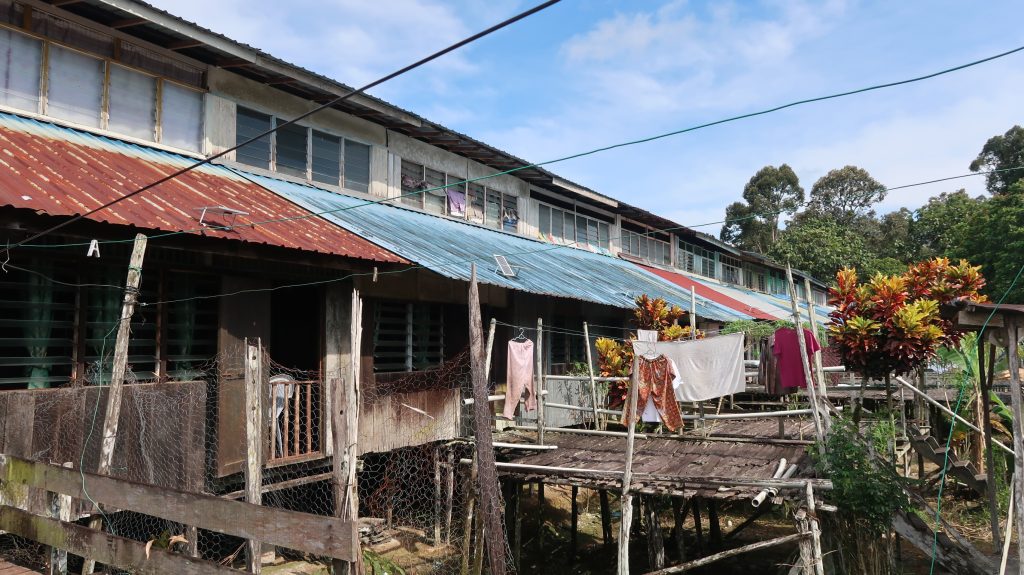
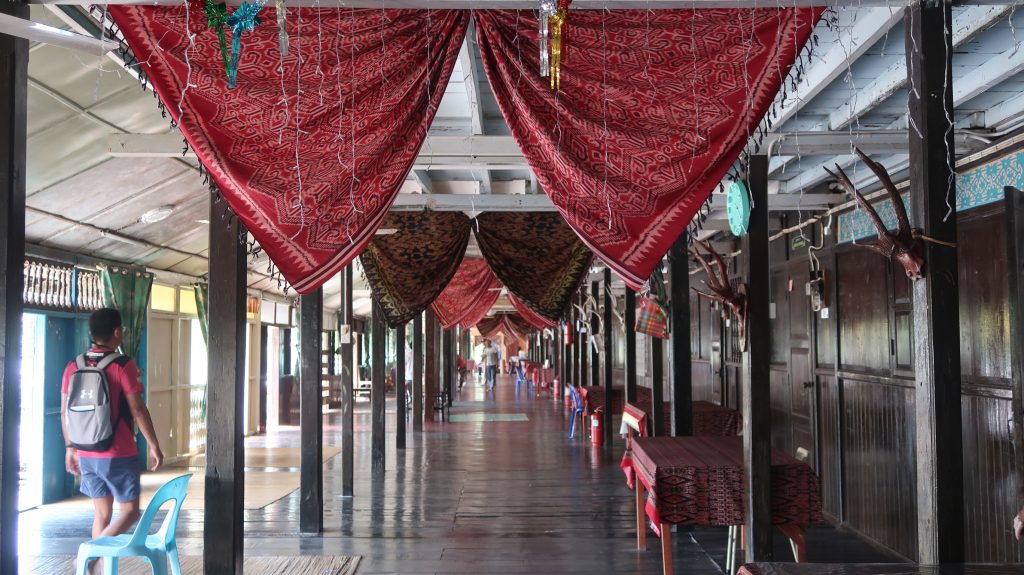
The current Tuai Rumah (head of the longhouse), Teacher Macmillan, warmly welcomed us and shared stories about the history of Rian Batang. The longhouse was named after the durian trees that once grew abundantly along the nearby river.
Rian Batang consists of 28 separate family rooms, all framed in timber and constructed from Belian wood, a durable, long-lasting local hardwood.
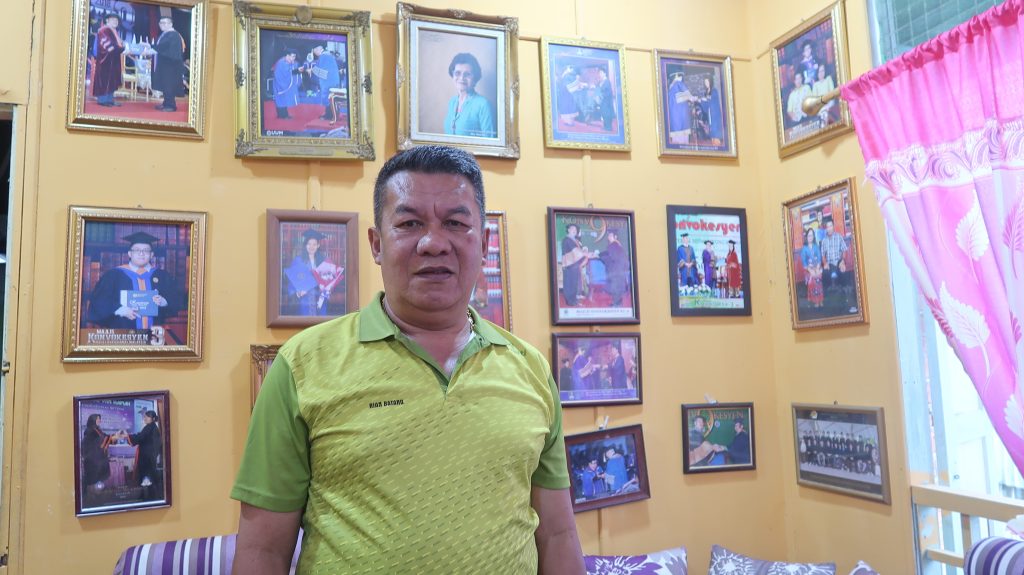
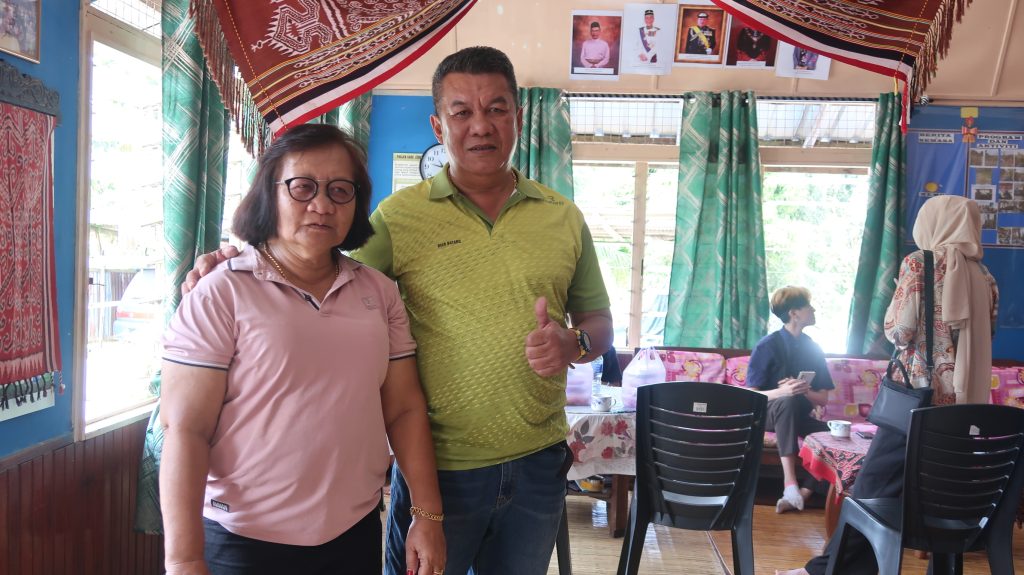
Walking through the longhouse, you could truly feel the weight of decades of family history and cultural heritage preserved within its walls. Some sections remain original, built without the use of nails, showcasing remarkable traditional construction techniques.
One of the residents, Teresa Matthew Intai, shared that she and her husband have lived there since 1987 and have witnessed the evolution of the house and community over the years.
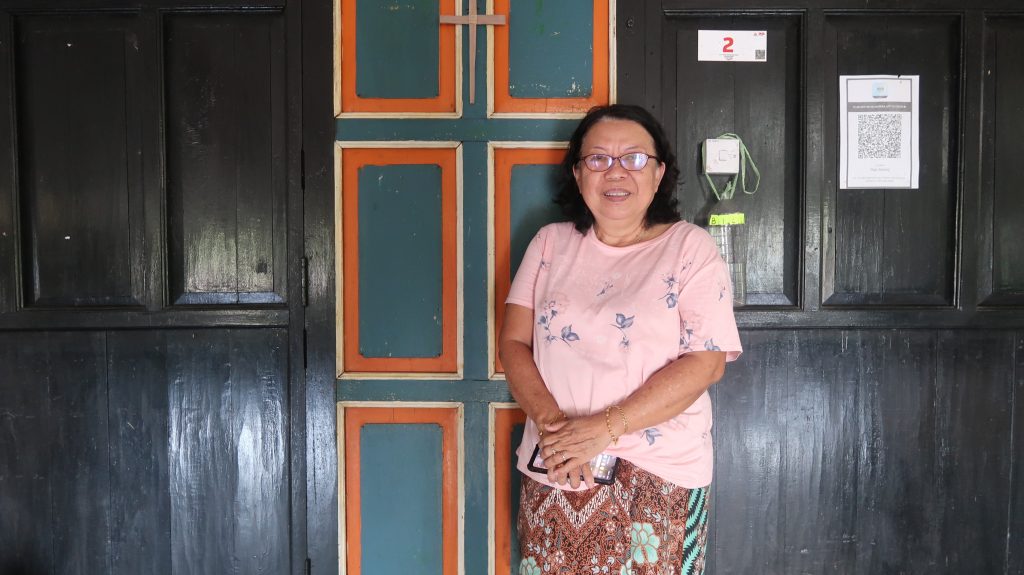
The residents of the longhouse are all Iban. In earlier times, many of them were involved in paddy farming and rubber tapping, which formed the backbone of their livelihood.
These longhouses are typically designed with individual living quarters called bilik and a shared communal space known as the ruai, which serves as the heart of social life in the community. In the past, river transport by longboat was essential for travel and trade.
Today, infrastructure developments such as the Pan-Borneo Highway have improved road access and raised living standards, bringing modern convenience while still preserving the strong sense of tradition and community that defines life in a longhouse.
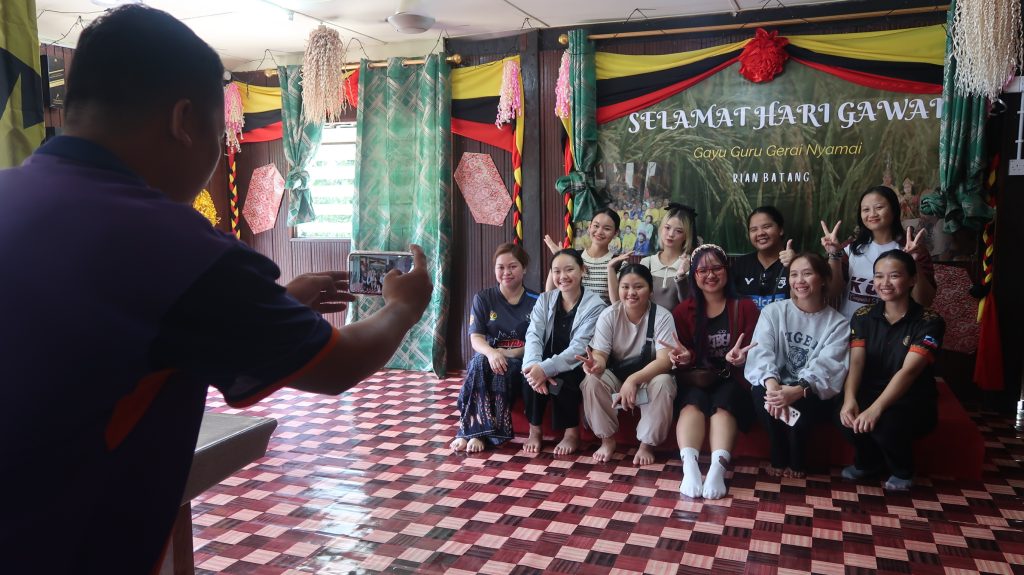
All in all, while Sarawak’s majestic landscapes and iconic landmarks often steal the spotlight, Betong’s Gawai Dayak celebration reminds us that the region’s true treasure lies in its people, their resilience, traditions, and open-hearted hospitality.
The event not only deepened our understanding of the Gawai Dayak culture but also offered an eye-opening and sensory-rich experience. Sharing a meal with a local family, hearing stories passed down through generations, and feeling their genuine warmth made the celebration truly unforgettable.
THE BRUNEIAN | BETONG, SARAWAK

